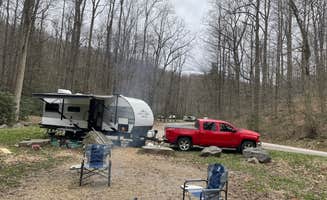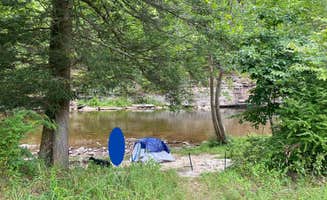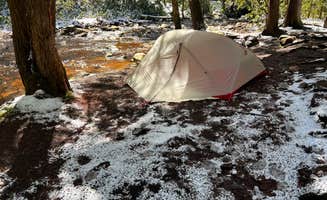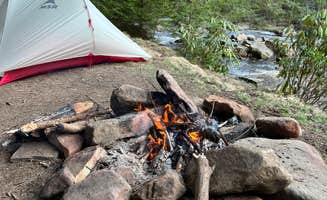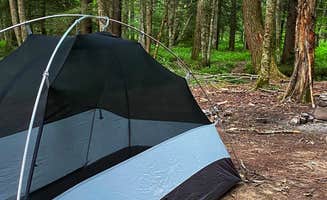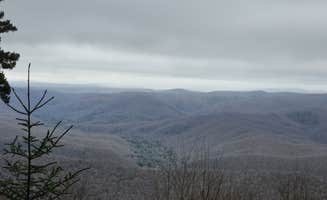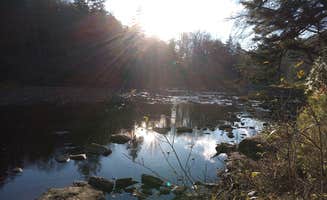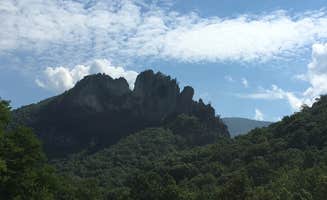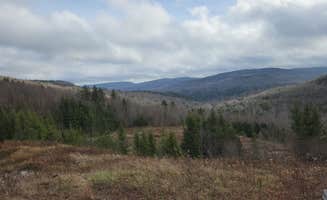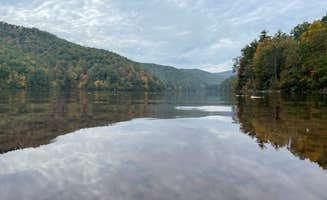Primitive camping near Harman, West Virginia offers numerous free sites throughout the Monongahela National Forest at elevations ranging from 2,300 to 3,200 feet. The region receives approximately 55-60 inches of annual precipitation, creating lush forest environments with dense tree cover and understory vegetation. Most sites remain open from April through November, though weather conditions can limit access during winter months.
What to do
Hiking directly from camp: At Dolly Sods Backcountry, numerous unmarked trails provide wilderness exploration. "The trails were well maintained and offered a wonderful variety of wooded and open space riding," notes one visitor about the trail system. Another camper warns that "a good physical map and compass, the skills needed to use them, are vital here. There are no trail marks and the path can be confusing."
Fishing nearby creeks: Multiple campsites provide direct creek access for fishing. At Gandy Creek Dispersed Camping, "the fishing is wonderful," according to Kristoff M. Another camper mentioned, "Very nice area several nice spot right along the creek. Areas are spread out and private. Nice spot to relax and escape along creek."
Winter exploration: Some areas remain accessible during colder months, offering a different experience. "We camped here in winter and just pulled into the first designated spot. There was snow but the fire pit was easy to dig out. Very quiet in late December and the sound of the creek was really peaceful," writes Justin L. about his Gandy Creek experience.
What campers like
Privacy between sites: At Little River Dispersed Campsites, "The site was breathtaking, with a small stream pool running along one edge, and the rushing river on another. Soft dirt padded the entire area, and great trees filled the space." Another camper noted, "My husband and I stayed here for one night with our dog! We arrived around 6pm on a Friday evening. A couple of the spots were taken but we found a lovely spot in the group campsite."
Natural swimming spots: Several areas feature deeper water sections. "If you park and walk down to the river, if you turn right, there's a beach area about 50 yards down that offers a great spot to take a dip!" explains a Little River visitor. Similarly, at Gandy Creek Dispersed Camping, "Several spots along the creek are deep enough for swimming."
Stargazing opportunities: The elevation and minimal light pollution create excellent night sky viewing. "The moon was bright but you could still see hundreds of stars," reports a camper at Mower Basin. Another visitor to Canaan Loop Road Dispersed observed, "Towering pines lined the sight, and provided a gorgeous backdrop for the stars and fireflies at night."
What you should know
Road conditions vary significantly: Access to many sites requires careful driving. "The road is a mix of gravel but also dirt so it can become muddy during rain. If you follow the road, there is a river crossing that will take you to additional camp spots," explains one visitor to Switzer Lake Dispersed Camping. Another adds, "The road beyond the river can get more tricky for low clearance vehicles."
Wildlife awareness: Bears are present throughout the region. "We have encountered a bear at or around the campsite 3 times," reports a Switzer Lake camper. Another visitor cautions, "Not even 2 minutes from our dispersed camp site we were charged by an extremely aggressive black bear... We decided to keep ALL FOOD in the car's trunk those nights and not hanging in a tree just to be safe."
Limited or no cell service: Most areas have minimal connectivity. One camper at Canaan Loop Road noted, "There's minimal cell reception and by that I mean you'll be walking along and all the sudden your phone will start dinging because you hit a pocket where you get one bar of reception and the text messages pour in." At Switzer Lake, a visitor confirmed "there is no cellphone signal for any carrier from what I could tell."
Tips for camping with families
Suitable sites for children: Look for sites with level ground away from steep drops. "We picked a spot about halfway into the dispersed camping area, creek side along the Gandy creek. We were closer to the road than we wanted to be but because the past few days had been beautiful spring weather, the area was packed," explains one family at Gandy Creek.
Weather preparedness: Mountain weather changes quickly, especially at higher elevations. "Definitely be prepared for high winds and rain. We hiked in in warm weather and once we reached the top of a long entrance road (where one trailhead was) we found snow," recalls a visitor to Dolly Sods Backcountry.
Bathroom considerations: Most areas lack facilities. "I totally recommend being self-contained. Dispose of your waste properly, please," advises a Gandy Creek visitor. For families, bringing a portable toilet solution can be helpful.
Tips from RVers
Site selection for larger vehicles: Some areas have limited turning space for RVs. At Lower Glady Dispersed Campground, "There is a very sharp turn if you come in from the south on Sully Road, which seems to be the primary way to get there. My Subaru Forester didn't have any issues, but if you're driving an RV or have a trailer, you may have a struggle."
Advance arrival recommended: Sites fill quickly, especially on weekends. "The campsites are bordered by boulders. The toilet was one of the cleanest I have seen. Most sites have good shade while still open to the sky," notes a Lower Glady camper. Another adds, "Sites are level and have good back-in driveways. Fire rings are large."
Self-contained capacity: Bring all needed supplies as services are limited. "You need to bring everything with you and take it all out with you," advises a camper about dispersed camping in the Monongahela National Forest.


